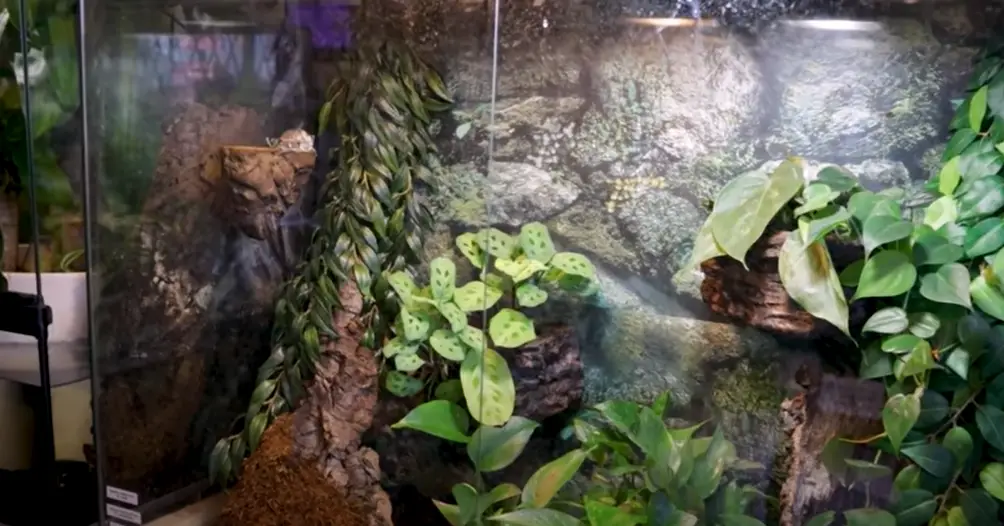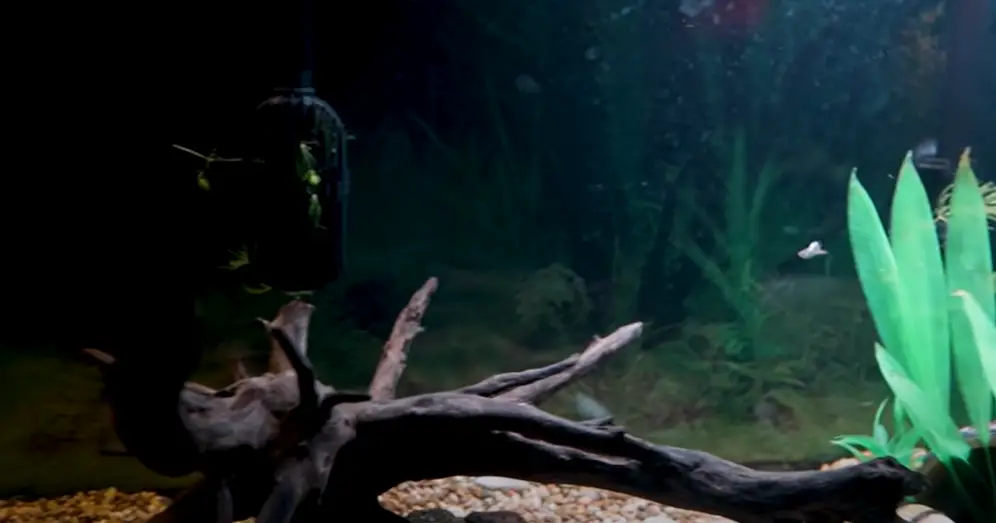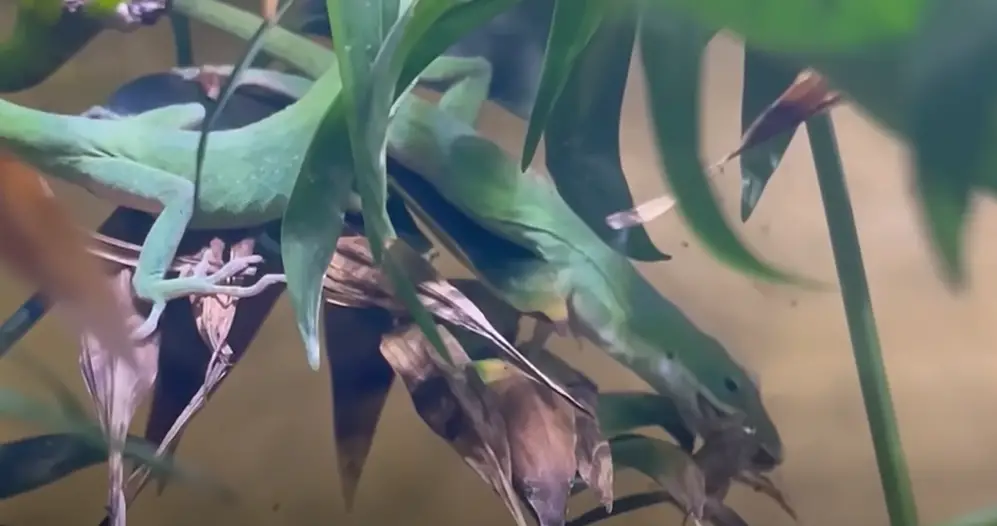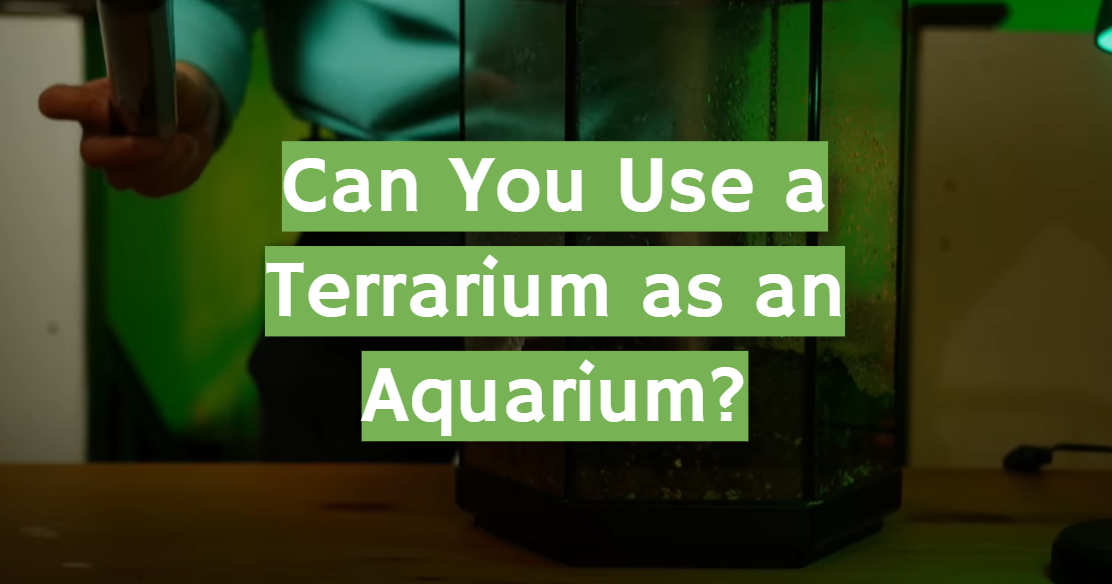Aquariums are a popular addition to any home. They can be used to house a wide variety of fish, and they can also provide a beautiful focal point in any room. If you’re thinking of adding an aquarium to your home, but you’re not sure if you have the space for it, you may be wondering if you can use a terrarium as an aquarium. In this article, we will explore the pros and cons of using a terrarium as an aquarium, and we will help you decide if it is the right choice for you.
What Are Aquariums And Terrariums Used For?
Aquariums are commonly used to house a variety of aquatic animals, from fish and frogs to invertebrates such as snails and crabs. They come in a range of sizes and can be made from glass or acrylic, depending on your preference. Fish tanks need unique lighting, filtration systems, and other gear to prevent the water from becoming polluted.
Terrariums, on the other hand, are typically smaller than aquariums and designed specifically for land-dwelling plants and animals. Terrariums are generally self-sufficient ecosystems that don’t require any extra machines such as lights or filters. All they need is the occasional misting or irrigation to keep them running smoothly. [1]
Can I Keep Reptiles In A Dry Aquarium?
It is possible to keep reptiles in an aquarium. However, if you plan on doing so, you must provide the necessary equipment to keep your pet safe and healthy. For example, most reptiles will require a specific temperature and humidity level in their environment – something that can be challenging to maintain in a standard aquarium. You should also consider whether or not your reptile needs access to UVB lighting, which is usually only needed for desert-dwelling species such as bearded dragons or leopard geckos.

Can snakes live in an aquarium?
In general, it is not recommended to keep snakes in an aquarium as they need a much larger space than most other animals. Snakes are extremely active and require plenty of room to explore and exercise. Additionally, some species may require specific temperatures or humidity levels that can be difficult to maintain in an aquarium. If you want to house a snake, it is best to get a terrarium specifically designed for reptiles.
Can lizards live in an aquarium?
Yes, some lizards can live in an aquarium. But, like snakes, it is usually better to provide them with a larger space. Additionally, you should consider the specific requirements of your lizard species and make sure that these can be met in an aquarium. For example, many lizards require access to UVB lighting which may not be possible for an aquarium setup.
Can chameleons live in an aquarium?
Chameleons are not usually recommended for aquarium living. They require a very specific, controlled environment and access to UVB lighting which can be difficult to provide in an aquarium. Additionally, because chameleons are arboreal (tree-dwelling) animals, it is best to provide them with plenty of height and space to explore. A terrarium specifically designed for reptiles would be the ideal choice for housing chameleons. [2]
Can turtles live in an aquarium?
Yes, turtles can live in an aquarium. However, they require a large tank and specific temperature and humidity levels that are difficult to maintain in an aquarium environment. Additionally, most species of turtle will need access to UVB lighting which may not be possible in an aquarium setup. Therefore, if you plan on keeping a turtle it is best to get a terrarium specifically designed for reptiles.
Can I Turn A Terrarium Into An Aquarium?
Yes, it is possible to turn a terrarium into an aquarium. However, you must make sure that the terrarium is large enough to accommodate the aquatic animals and plants you wish to keep. Additionally, you must ensure that all of the necessary equipment such as filters and lighting are installed properly to provide your aquarium inhabitants with a healthy environment. [3]
Aquariums have stronger glass
Yes, aquariums and terrariums have several differences besides size, shape, and glass thickness. Aquariums require specialized lighting, filtration systems, and other equipment to keep the water clean for the inhabitants. Terrariums usually don’t need any additional equipment like lights or filters – just some basic maintenance such as misting or irrigation. Additionally, most reptiles require a specific temperature and humidity level in their environment – something that can be difficult to maintain in an aquarium but is much easier to do in a terrarium. Finally, because many aquatic plants and animals thrive best under natural sunlight, some aquarists prefer to use outdoor tanks instead of those made of glass.

Aquariums are typically taller
Yes, aquariums are usually taller than terrariums. The shape of the tank determines its capacity for water and inhabitants. Since most aquatic animals require plenty of room to swim around, aquariums tend to be much deeper than terrariums. Additionally, if you plan on keeping plants in your setup then you should also consider their need for light – something that may not be accessible with a shallow-sided aquarium.
Terrariums are lighter
Terrariums are generally made of lighter materials than aquariums, such as plastic, wood, or acrylic. Aquariums are typically made of heavier glass which is more durable but also much heavier and more difficult to move around. Terrariums can be much easier to transport due to their lighter construction. Additionally, terrariums usually come with covers that help keep in humidity and heat levels – something not commonly offered with aquarium setups.
Terrariums will often open to the front
Yes, terrariums typically open to the front which makes them much easier to access than aquariums. Aquariums usually have lids or tops that can be difficult to remove and replace. Additionally, many terrariums offer ventilation at the top which helps maintain proper humidity levels – something not available in most aquarium setups.
Only aquariums are waterproof
Yes, aquariums are typically waterproof whereas terrariums may not be. This is because aquariums are made of thicker glass and have special seals placed around the edges to prevent water from leaking out. Terrariums, on the other hand, often lack these features which can lead to water damage if exposed to too much moisture. Therefore, it is important to consider your environment when choosing between an aquarium or a terrarium as a home for your aquatic animals.
How to Turn Your Reptile Tank Into an Aquarium
Step #1: Clean the Terrarium
Before you can turn your terrarium into an aquarium, you must first clean the tank. This is because aquatic animals and plants need a clean environment to thrive. Use hot water and a mild detergent or aquarium-specific cleaning agent to wipe down the inside of the tank. Make sure to rinse away all soap residue before moving onto the next step.
Step #2: Verify the Structural Integrity of the Tank
Next, check the structural integrity of the tank. Aquariums are typically made of thicker glass than terrariums and need to be able to hold a certain amount of pressure without leaking or cracking. Inspect the seams and corners for any damage that could cause water leakage. If you find any cracks, replace the tank before proceeding.
Step #3: Set up Your Fish Tank
Now that you have a structurally sound tank, it is time to set up your fish tank. Begin by adding the substrate, such as gravel or sand, at the bottom of the tank. Then add any decorations or plants before adding water and dechlorinator. Finally, introduce compatible species of fish and adjust the temperature and pH levels according to their requirements.

Step #4: Initiate the Nitrogen Cycle
Finally, you need to initiate the nitrogen cycle in your tank. This is a process where beneficial bacteria break down toxic ammonia and nitrites that are produced by fish waste. In order for this process to work correctly, you must maintain the water parameters in your tank and not overstock it with too many fish or plants.
Step #5: Introduce Your Fish to Their New Home
Once you have completed all of the steps above, your tank is ready to be inhabited. Slowly introduce your fish to their new home and monitor them closely for any signs of stress or illness. With proper care and maintenance, you can enjoy your aquarium for years to come!
FAQ
What’s better: glass or acrylic aquarium?
The type of aquarium you choose will depend on your needs and preferences. Glass aquariums are usually heavier but more durable, while acrylic aquariums tend to be lighter and easier to transport.
Why are fish tanks so expensive?
Fish tanks can be expensive due to their size, the materials used to construct them, and the necessary accessories. Additionally, aquariums often require additional maintenance and electricity for filtration systems.
Do aquariums use a lot of electricity?
Aquariums typically require an external power source to operate their filtration systems and other electrical components. Therefore, they do use a fair amount of electricity but are not as expensive to run as some people may think. You can reduce the cost by using energy-saving lights and filters. [4]
Useful Video: How To Make A Reptile Tank Safe For Using For A Fish Tank
Conclusion
If you’re looking for a low-maintenance way to add some greenery to your home, terrariums are a great option. And if you’re wondering whether you can use a terrarium as an aquarium, the answer is yes! All you need is a little bit of gravel and some plants that can tolerate being submerged in water. With a terrarium, you can have the best of both worlds: a beautiful array of plants, and a self-contained ecosystem that doesn’t require much care or attention.
References:
- https://www.tankarium.com/vivarium-vs-terrarium/
- https://www.thesprucepets.com/veiled-chameleon-1238538
- https://www.cuteness.com/article/use-reptile-aquarium-fish
- https://www.algone.com/the-aquarium-and-energy-consumption






Leave a Review